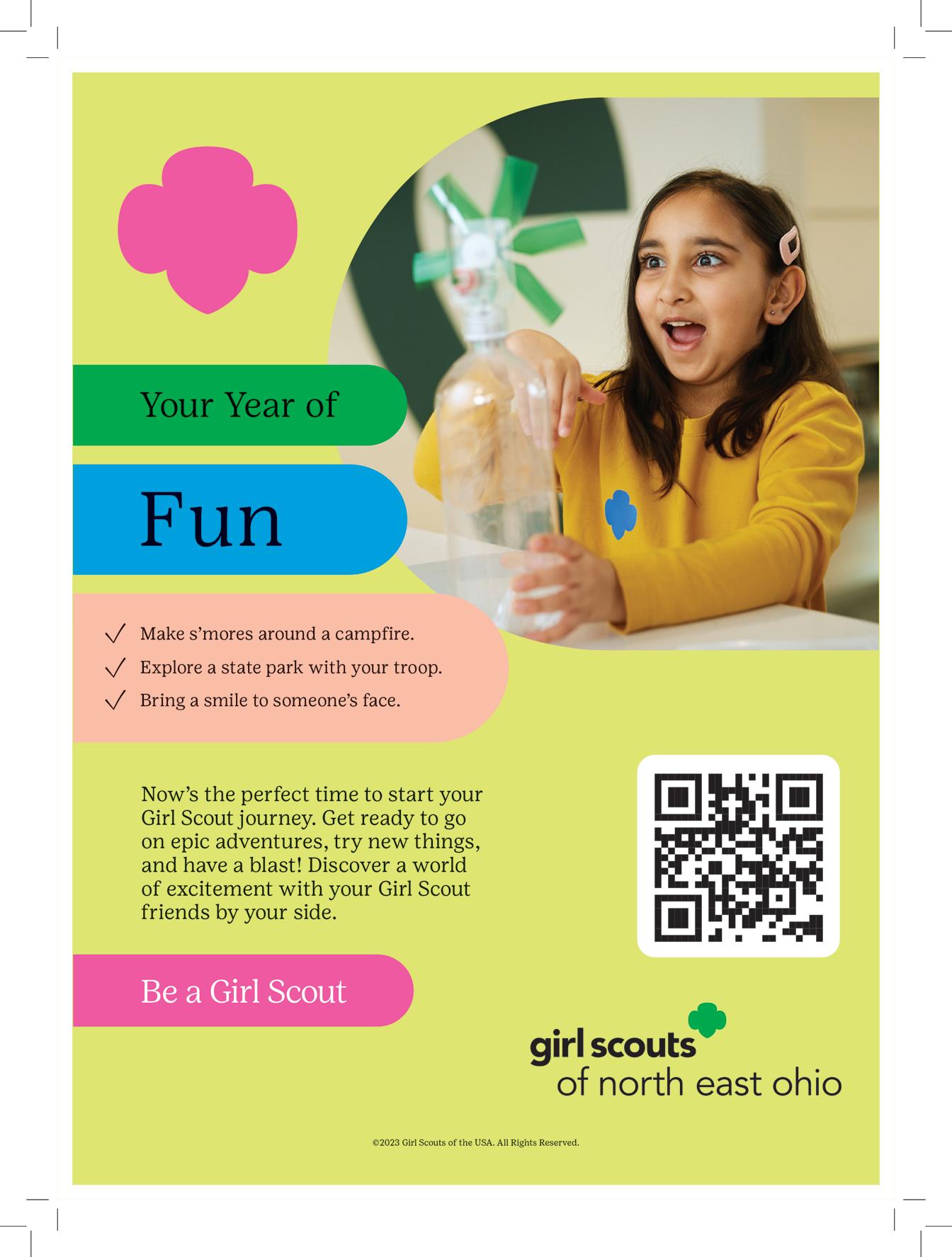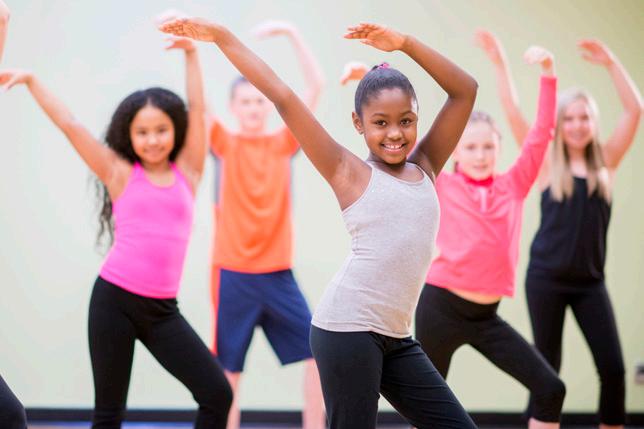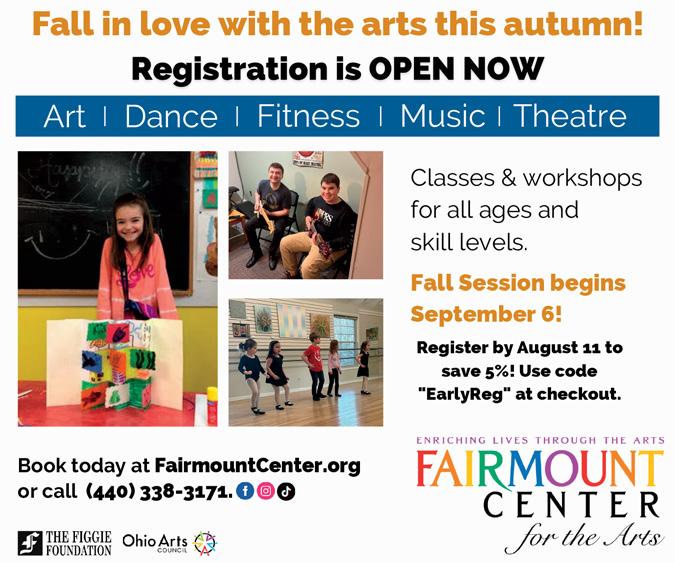
4 minute read
Step Into Dance: After School Dance Programs Across Northeast Ohio Can Benefit Kids
from Northeast Ohio Parent | August 2023
by Mitchell Media LLC: Northeast Ohio Parent & Northeast Ohio Thrive/Boomer
Kids can step into dance classes at art centers and dance studios across the Northeast Ohio region. They benefit from the diverse opportunities that are available. From ballet and contemporary to hip-hop and jazz, there’s something for kids of all ages and interest levels.
Dance allows kids of all abilities to explore the arts, expand their skills, build bonds with friends and the community, and much more.
Every Step Is Celebrated
Starting dance might feel daunting for kids, but it can open doors they didn’t think possible.
“In dance, every step, even baby steps are celebrated, and quite often, kids are working toward a performance aspect,” says Melanie Szucs, associate director of dance education at Beck Center for the Arts. “The children
By Ginny McCabe
get comfortable being in front of people, and even though they’re not talking in front of people, they are dancing in front of people. Somehow, that carries over into school and they are more comfortable getting in front of people.”
She says there can be different reasons at different ages for kids to get involved in dance.
Dance can provide kids with new experiences and help to build confidence. It can also offer physical activity and exercise.
“For our young students, quite often, it’s their first experience away from mom or dad. So, it’s the social aspect of it, being with other children their age, by themselves,” Szucs says. “We do a lot of gross motor skills and coordination exercises, and creative dance, where they can just do their own thing and feel good about it. Then, as kids get older, it goes into all the physical activity that they are getting, which children don’t get anymore. There’s also a teamwork aspect that comes from working with their peers, and the discipline of it, which is such a bene fit, it carries over into their schoolwork.”
Mitchel Federan, director at Center Stage Dance Studio in Northfield says it’s import ant to be well-rounded as a dancer.
The studio offers programs in ballet, jazz, tap, hip-hop, contemporary, lyrical and acrobatics.
“I think part of it is each student is unique and can individualize the different styles in different ways,” Federan says.“Dance is such a healthy, confidence-building activity.”
He said the studio often brings in guest and master teachers to help show the dancers what they could do with each style of dance.
For dance, there is no one-size-fits-all ap proach, as everyone has different goals. Some are taking classes for fun or as Federan says the “joy of dance” but he notes, all options are available for dancers in Northeast Ohio.

He adds while it’s important to have that foundation, for those looking to go beyond recreational, more doors open if they are a versatile dancer.





Talise Campbell, executive artistic director at Djapo Cultural Arts Institute says the benefits of dance that carry over into all other areas of life.
“Kids are all day long dealing with math, science, English, history, and all the other subjects, and that can be stressful,” she says. “So, I find that introducing them to any art form, specifically dance, because it encompasses music, movement and all of those wonderful things helps with relieving stress, but it also comes with other benefits, including focus, dedication, discipline and the knowledge of learning about other art forms from all over the world is fantastic.”
The Art Of Dance
“Dance is art, and we can’t have a society, or function without art,” Campbell says. “Art heals. Art saves lives, and dance is art. I don’t want to see any kids who have ever grown up and haven’t had the opportunity to take a dance class. Dance is for boys and girls. I would encourage kids to participate in some form of dance, sometime in their lives.”
Class offerings at Djapo include Tai Chi, West African dance, West African drumming, along with a professional guest artist series, where children and families are introduced to artists from around the world, focusing on different genres of dance.
“We have people coming together to learn about each other through art and through dance,” Campbell says.
Szucs says there’s so much connection now between the arts,




“Visual art is connected to dance, and there’s dance on film, which has become a whole new art, of course, music and theater, they are all intertwined,” she says. It’s like a whole new realm of dance. Since COVID, people are taking the time to connect things in a different way,”
Beginning To Advanced Skills
Catherine Leneghan, director of Leneghan Academy of Irish Dance notes dance is great for the mind-body connection.
“Children can develop their coordination while also focusing on learning the steps,” she says. “Learning to move their bodies in a very specific way to fit the music uses so many skills. Dance also provides children and their parents with a different cohort than their classmates at school. A child who may be struggling with school socialization will have a whole new group of friends at dance class.”
Later starters can be discouraged if they are in classes with younger children while they progress. Every child is different: what might be “too young” for one child might be perfect for another.






“The tangible skills of counting the music, mastering their steps, learning how to perform at different venues, etc.,” Leneghan says. “They learn to be on time and organized. They develop time management skills to balance school/dance/other activities. They learn the value of taking care of their bodies, hydrating, stretching, and proper rest. They learn to accept corrections and compliments. They know how to be gracious in victory and defeat. They develop empathy toward others.”
Elizabeth Bolander, executive director at Fairmount Center for the Arts, adds it’s exciting to see students grow and thrive throughout the course of their dance session.


“We really find that there’s a confidence-building there, whether they are a beginning ballerina, who is just taking their first steps on stage, and maybe, the little three-year-olds don’t remember all the steps, but we’re really proud of them just because they went out and tried, to our more advanced dancers, who are often taking multiple classes, and they’re having to learn how to manage all of that, keep it all straight in their heads, and they’re performing these beautiful, multiple dances in a performance,” she says.
“We are all about giving people an opportunity to explore the arts. So, it’s a more recreational dance program,” Bolander adds “so, it’s perfect to fit in among many other interests that your student might have. It’s a nice blend. It’s more inclusive, and we welcome people no matter where they are in their state on the dance journey, but there’s also opportunities for people to specialize and really dive in deep, if that’s their interest.”










